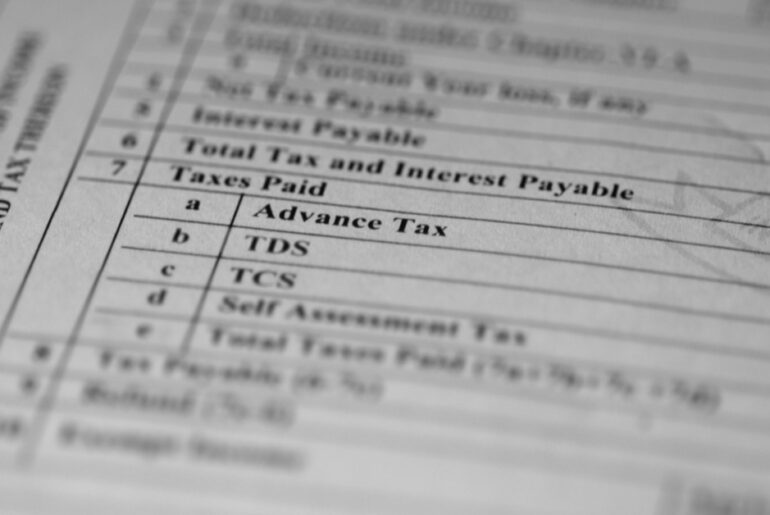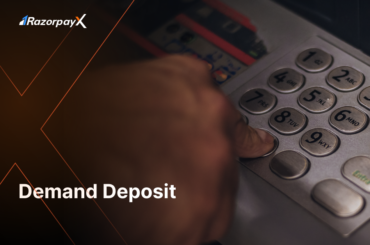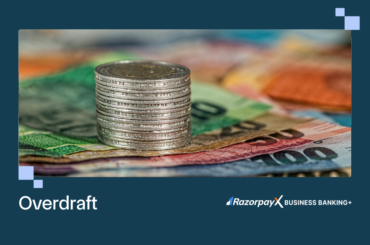Advance tax payment is a system where taxpayers pay a part of their tax liability before the end of the fiscal year.
The advance tax payment system eases the burden of paying taxes in a lumpsum at the end of the year, and gives the government a steady flow of income through the year.
Understanding advance tax is important for anybody paying more than Rs 10,000 in taxes for one fiscal year. This blog is a one-stop guide to everything you need to know about advance tax.
Table of Contents
What is Advance Tax Payment?
Advance tax payment, or the pay-as-you-earn tax is applicable only for taxpayers who pay more than Rs 10,000 as taxes in one fiscal year.
It is also called “pay as you earn” tax since the payment is made as the salary is earned through the year.
Advance tax can be paid offline or online.
The Income Tax Department has authorised the branches of several banks to receive offline advance tax payments on behalf of the government.
Alternatively, the online route is much easier, convenient and accessible.
Who Has to Pay Advance Tax?
Any taxpayer who is liable to pay more than Rs 10,000 in taxes in a year has to pay advance taxes.
This includes individuals, HUF, companies, or associations that earn enough to pay Rs 10,000 in taxes in one year.
Advance Tax Payment Due Dates
Apart from knowing how to pay advance tax online, you must also remember the due dates for payment of advance tax for companies and individuals.
Advance Tax Payment Due Dates for Companies
| Sl. No. | Amount of tax payable | Due date for Tax Instalment |
| 1 | At least 15% of advance tax liability | Either on or before 15th June |
| 2 | At least 45% of advance tax liability | Either on or before 15th September |
| 3 | At least 75% of advance tax liability | Either on or before 15th December |
| 4 | 100% of advance tax liability | Either on or before 15th March |
Advance Tax Payment Due dates for Individuals
| Sl.No. | Amount of tax payable | Due date for Tax Instalment |
| 1. | At least 15% of advance tax liability | Either on or before 15th June |
| 2. | At least 45% of advance tax liability | Either on or before 15th September |
| 3. | 100% of advance tax liability | Either on or before 15th March |
How to Calculate Advance Tax Dues?
Income Tax Department – Advance Tax Calculator
Depending on income source, nature of income, tax deductions and exemptions, calculating the actual amount of advance tax due to be paid can be a complicated process.
The Income Tax Department has a calculator to help you know exactly how much advance tax you are due to pay. Just fill in the various required fields on the calculator with your details to compute your taxes.
Advance Tax Manual Calculation
You can also compute advance tax liability manually using these steps.
Step 1: Determine earnings for a given year.
Step 2: Calculate gross taxable earnings for a given year.
Step 3: Calculate the payable tax amount according to the applicable tax slab.
Step 4: Now, subtract the TDS amount that is deducted or the TDS, which will be deducted as per the tax slabs for different earnings.
If the tax liability at any time after the deduction of TDS exceeds Rs.10,000, they should adhere to the advance tax payment guidelines.
Example for Advance Tax Calculation
Let us assume that Mr Sharma has an annual income of Rs. 10,00,000.
Here is the advance tax calculation for Mr Sharma.
| Income | ||
| Gross Income | Rs 10,00,000 | |
| (Expenses) | Rs (1,00,000) | |
| Balance | Rs 9,00,000 | |
| Fixed Deposit Interest | Rs 50,000 | |
| Gross Total Income | Rs 8,50,000 | |
| PPF Contribution | Rs (10,000) | |
| LIC Premium | Rs (5,000) | |
| Medical Insurance | Rs (5,000) | |
| Balance | 8,40,000 | |
| Payable Tax | Rs 53,040 | |
| Education Cess | Rs 1,684 | |
| Total Tax | Rs 54,724 | |
| TDS | Rs (20,000) | |
| Advance Tax to be Paid (Total Tax- TDS) | Rs 34,724 |
How to Pay Advance Tax Online?
Follow these steps after visiting the e-payment facility on the official web portal of the Income Tax Department:
Step 1: Select the option for tax applicable as – (0020) Corporation Tax (Companies).
Step 2: Choose the type of payment as – (100) Advance Tax.
Step 3: Select your preferred month of payment.
Step 4: Input PAN, Assessment Year, email address, contact number, address, and other necessary details. Then select Proceed. After you do that, the page will redirect you to a payment gateway or a net banking page, based on your payment mode.
Step 5: Make the payment. Save a copy of the payment challan for when you’re filing the ITR for your business.
What is Advance Tax Late Payment Interest?
If a taxpayer fails to pay the advance tax instalment on time, they are liable to pay an interest penalty under Section 234B and Section 234C of the Income Tax Act.
Interest is calculated at the rate of 1% per month or part thereof for the period of delay, and it is calculated on the amount of tax that is unpaid.
Section 234B of the Income Tax Act deals with the interest penalty that is charged for non-payment or short payment of advance tax. This interest penalty is levied if the taxpayer has not paid at least 90% of the assessed tax liability by the end of the financial year.
Section 234C of the Income Tax Act deals with the interest penalty that is charged for delay in the payment of advance tax instalments. This interest penalty is levied if the taxpayer has not paid the required instalment of advance tax by the due date.
It is important for taxpayers to pay their advance tax on time to avoid any interest penalties or other legal consequences.
Advance Tax Payment Refund
Advance Tax Payment Refund is a refund of any overpayment of advance tax. Let’s have a look at how you can claim your refund.
1. Log in to your online banking account or visit your local bank branch.
2. Download the Advance Tax Payment Refund Form from the Income Tax Department‘s website.
3. Fill out the form and provide all the required details like your PAN number, the amount of advance tax paid, the assessment year, etc.
4. Submit the form to your bank, along with any other documents required.
5. The bank will verify the information and initiate the refund process.
6. You may receive the refund amount in your bank account within a few days.
Advance Tax Payment – Benefits
To taxpayers, advance tax is a way to reduce the burden of paying taxes in a lumpsum at the end of the year. It also helps taxpayers avoid fines and penalties by missing the final payment of taxes. The risk of not being able to pay taxes at the end of the year due to shortage of money is also reduced significantly.
How to Pay Advance Tax Online With RazorpayX
Paying advance tax through government portals can be quite stressful. Slow, laggy government portals are a big reason individuals and business owners avoid paying taxes on time.
Luckily, there are a number of solutions on the market that make advance tax payments smooth. One such solution is RazorpayX Tax Payments.
Read more: Guide to RazorpayX Advance Tax Payment
Step 1: Set up your advance tax by logging into your RazorpayX dashboard, selecting “tax payments” from the menu and heading to the “Advance Tax” tab. Then, enter your basic business details.
Step 2: To make the payment, click on “ + Advance Tax” in the Advance Tax tab and confirm your details in the “Adding Filing Details” window. Click “Next” to proceed.
Step 3: Add the amount of tax that you need to pay. You can input a detailed break-up of the tax amount payable using the “Show all fields” menu.
Step 4: Click on “Pay Now” to proceed with the payment, or “Save Payment” in case you want to get back to the payment later.
- If you want to “Pay Now”, just enter the OTP and complete the payment.
- If you select “Save Payment” then enter the OTP for verification, and click CREATE PAYOUT to save the payout. The payout is created and can be seen on the Advance Tax screen.
Once you’re done, you can view the challan, too.
Don’t miss out on the smoothest tax payments experience in town. Check out RazorpayX Tax Payments.
Frequently Asked Questions
What will happen if the advance tax paid exceeds the total tax liability?
If the advance tax paid exceeds the total tax liability, the extra amount will get refunded. If the advance amount surpasses 10% of the tax liability, the IT Department will pay an interest of 6% p.a.
Is there any penalty applicable for non-payment or deferred payment of advance tax?
Yes. A penalty is imposed for non-payment or deferred payment of advance tax within the scheduled time frame. Penal interest is levied under Section 234B and 234C of the Income Tax Act, 1961 for non-payment and deferred payment of the advance tax.
Is an NRI liable for payment of advance tax?
Yes, an NRI (Non-Resident Indian) is liable to pay advance tax if their estimated tax liability for the financial year is Rs. 10,000 or more. The same due dates for advance tax payments apply to NRIs as to resident individuals - on or before June 15th, September 15th, December 15th and March 15th. Failure to pay the required instalment on time may result in an interest penalty under Section 234B and Section 234C of the Income Tax Act. It is important for NRIs to assess their tax liability and pay their advance tax on time to avoid any penalties or legal consequences.
Can I claim a deduction under 80C while estimating income for determining my advance tax?
Yes, you can claim a deduction under section 80C while estimating your income for determining your advance tax liability. Section 80C of the Income Tax Act provides deductions for various investments and expenses, such as contributions to the Public Provident Fund (PPF), life insurance premiums, and tuition fees for children's education, up to a maximum of Rs. 1.5 lakhs per financial year.
When should I pay advance tax?
You should pay advance tax if your estimated tax liability for the financial year is Rs. 10,000 or more. The due dates for advance tax payments are usually in four instalments - on or before June 15th, September 15th, December 15th and March 15th. If you fail to pay the required instalment on time, you may be liable to pay an interest penalty under Section 234B and Section 234C of the Income Tax Act. It is important to pay your advance tax on time to avoid any penalties or legal consequences.





